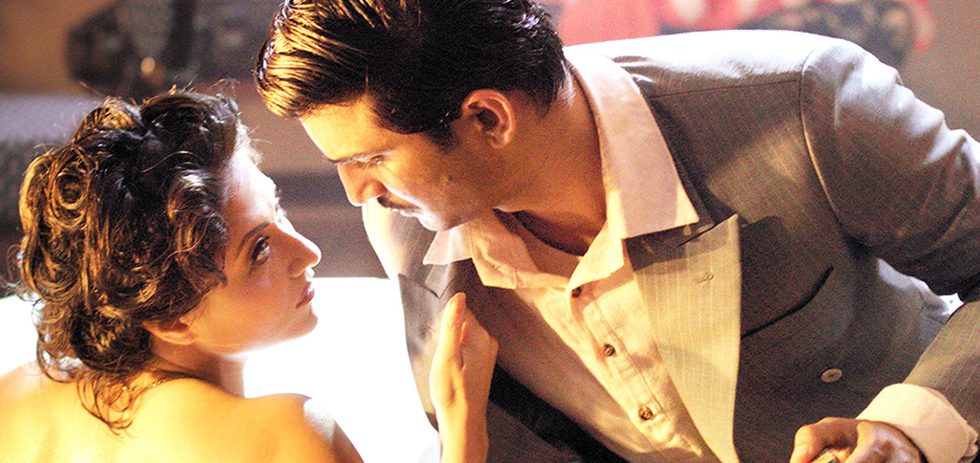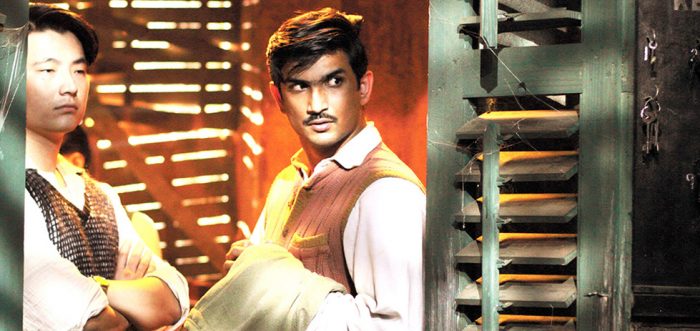
Dibakar Banerjee belongs to a pantheon of new-age Hindi film directors who have introduced Hindi film audiences to narratives that have broken the conventional expectations for celebrity driven, larger-than-life sagas. These directors have defied expectations by garnering both critical and commercial success – it was a long held misguided belief that you either made a ‘film for the critics or for the masses’, hence the ubiquitous but imaginary status divide between commercial/mainstream and indie/arthouse/parallel cinema in the Hindi film industry that existed. They’ve also been responsible for familiarising us with acting talents that would otherwise not fit the traditional ‘hero’ image on the screen – the emergence of Nawazuddin Siddiqui post his partnership with Anurag Kashyap and the release of Gangs of Wasseypur is a prime example. In other words, the future of Hindi cinema in great hands.
The character of Byomkesh Bakshi (the film spells Bakshi with the phonetic ‘y’ as opposed to the accepted ‘i’) is extremely popular in Bengali literature and the fictional detective captured the imagination of Indian readers ever since he first appeared in print back in 1932, created by Sharadindu Bandyopadhyay. Even the great Satyajit Ray adapted the detective and his stories for celluloid, so it was going to be interesting to see what Banerjee would bring to the table with his adaptation. Banerjee gives the fictional detective a noir makeover and in doing so, has created a film that is so radical in thought and execution – so unlike anything seen before – that it’s bound to go down as one of the landmark moments in the history of Hindi cinema and will change the way directors and audiences will treat noir on the big screen in Hindi films in the future.
You might think I’m exaggerating a little bit, but let me put this in perspective. I can actually count the number of noir films that have been released in Hindi cinema on my fingers. The visionary Guru Dutt was a great exponent of using noir filming techniques to create dramatic tension and play with point of view (such as in his film Baazi, 1951). However, Hindi film-makers have historically found more success by selectively using noir elements – such as the femme fatale – and infusing them with conventional Hindi film sensibilities that pandered to the expectations of the domestic audience. Hence, the success of films such as Teesri Manzil (1966) & Jewel Thief (1967) gave rise to a peculiar infusion of noir elements and conventional Hindi film narrative expectations and resulted in a genre in itself, what could be termed as ‘Indian film noir’.1 However, a straight out noir film remained but a rarity.
It’s also interesting for Banerjee to choose noir as a stylistic narrative medium in his attempt to re-imagine the fictional world of the Bengali detective on screen. Intuitively, Bakshi seems to be a character perfectly suited to noir. He relies more on interrogation techniques and a nuanced understanding of social etiquette, hierarchy and class structures to draw conclusions from the facts in front of him. In that sense, Bakshi is the anti-thesis of Holmes: Holmes relies on the scientific method for his deductions and inductions whereas Bakshi is a keen student of human psychology. This is not to say that Holmes is not intuitive or Bakshi is averse to science, rather an indication of how both these sleuths might approach the same problem prima facie. Byomkesh Bakshi is very much a by-product of his social context and often succeeds because of it, rather than in spite of it.
The narrative of the film is simple but extremely effective. Bakshi (played by Sushant Singh Rajput) is assigned the case of finding his client’s missing father. Banerjee introduces us to a ‘young’ Bakshi, one who is still raw and is picking up the tricks of the trade. This propensity towards fallibilism also aligns neatly with the conventions of noir. The lack of certainty of the protagonist in his own actions keeps the audience on edge. And quite naturally, Bakshi makes mistakes, many of them. But he learns quickly. However, it’s his fallibilism that drives the dramatic tension of the narrative, making him human as opposed to an oft-reduced ‘genius detective’ trope. However, no Bakshi story would be complete without situating it in its proper social context. Bakshi has to function in a chaotic world – the state of Bengal torn apart by World War II, radicalised youth, the last gasp of the British Raj trying desperately to hold on to its power and hierarchical status, an impending attack by the Japanese army on the ports of Bengal and a flourishing drug trade run by Chinese mafia.

The real winner here however, is how Calcutta and the state of Bengal in the 1940s come alive on screen in the midst of all these competing influences that are at play. Banerjee’s vision and Greek cinematographer Nikos Andritsakis’s cinematography combine to recreate a powerful portrait of the social complexities of Calcutta. The visual aesthetic of the time period is perhaps the most effective tool through which the noir sensibilities come forth on screen; much like the aesthetic of China that was so mesmerisingly captured in another recent noir film, Diao Yinan’s Black Coal, Thin Ice (2014).
Another highlight is the soundtrack, which is perhaps the most eclectic and unique mix of psychedelic rock, jazz and metal influences unlike anything heard in Hindi cinema before. It’s the ‘definitive next-door stoner album’ and I never thought I’d be using such a description non-ironically. In Indian cinema, playback recorded songs that are lip-synced by actors are the major attraction in terms of music, as opposed to instrumental compositions and scores. Detective Byomkesh Bakshy! quite happily tramples on these conventions and uses a film soundtrack in the western sense – compositions playing in the background used to undercut or accentuate the action on screen. With a catchy jazz number ‘Calcutta Kiss’, a metal number ‘Life is a Bitch’, and a most distinctive gothic sound in ‘Yang Guan Lives’, this is the most diverse, significant and truly progressive music album to come out of Hindi cinema in a long time. Will this be a fork-in-the-road moment for Hindi film music in the years to come? I truly hope so.
In terms of performances, it was refreshing to note that although the film has several parts essayed by international actors, it doesn’t reduce them to mere caricatures. Hindi cinema has a history of reducing non-local roles into a stereotypical mess – a Britisher’s attempt at speaking the local dialect but with a British accent, intending to induce humour and ridicule, for example. Thankfully, such a travesty doesn’t occur here. Mark Bennington as Deputy Commissioner Wilkie holds his own in a decent role, so does Takanori Kikuchi who plays Dr Watanabe.
The main cast is impressive and holds the dynamism of the plot threads together, guiding the audience through the chaotic and volatile landscape. Sushant Singh Rajput as the titular detective suitably underplays his role and is able to convincingly balance fallibilism with sparks of intellectual voracity. Most importantly, he wins you over with the humanisation of a larger-than-life fictional character. Swastika Mukherjee essays the part of the femme fatale well and Anand Tiwari who plays Byomkesh’s client has some excellent comedic moments with him. However, the best performance undoubtedly comes from Neeraj Kabi. His portrayal of the ambiguous antagonist – which swings from a mentor figure to a worthy adversary to a theatrical but deranged narcissist, elevates the narrative stakes to another level. It’s great to see Kabi having so much fun in a delightfully deceptive role after getting recognition for his breakthrough performance in Anand Gandhi’s indie film Ship of Theseus (2013).
I’m almost willing to forgive the final ten minutes of theatrical excess which blatantly act as a placeholder for a sequel. If there’s going to be a noir film series coming out of Hindi cinema, I’ve no shame in admitting that I’m secretly very excited by the prospect. Detective Byomkesh Bakshy! is a brave, unconventional and thoroughly entertaining attempt at noir and in the process becomes a landmark moment for Hindi cinema. Whether the Indian audience be able to accept such radicalisation is another question altogether.
